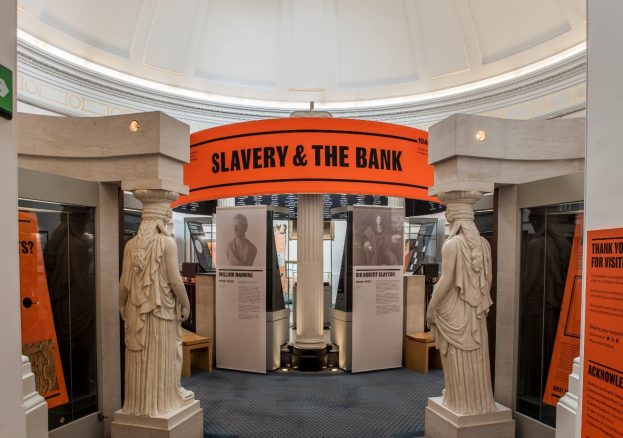
The exhibition in the Bank of England itself explores the history of transatlantic slavery through its connections with the Bank of England and the wider City of London. Founded in 1694, the Bank of England was a private bank that provided financial services to individuals, other companies and the Government.
Many City merchants and financiers would invest profits from riskier trade ventures into Bank of England stock, which was a safer investment. A significant enough investment in Bank stock qualified the holder for election as a Director or Governor. As a result, these offices were held by wealthy and successful businessmen.
The exhibition acknowledges that the Bank of England was founded and came to prominence at a time when London was becoming the centre of a global empire, and Britain was at the forefront of the transatlantic slave trade. For over 300 years, the slave trade tore more than 12 million African people from their homes and families in Africa. Several of the Bank’s founding figures were involved in the trading of enslaved Africans to the Caribbean and America – some directly, and many with commercial interests in slavery, banking and finance businesses.
The exhibition reflects on how the wealth created through transatlantic slavery shaped the development of Britain and tells the bank’s own story of some of the different ways it had a connection with the trade. It’s a complex tale and the institution has attempted to present a clear picture of the extent of these historical connections.
The work behind the exhibition gained momentum in early 2020 when a small number of colleagues in the Bank of England Ethnic Minority Network began an internal project to highlight the Bank’s links to transatlantic slavery. The Black Lives Matter protests of 2020 then showed unmistakably the public desire for institutions to be open about their history and connections with slavery and colonialism. As public attention turned to the question of who we commemorate in our public spaces, the bank began to look more closely at the figures on their own walls.
The resulting exhibition examines the different ways that individuals were involved, from owning plantations to trading in products produced by enslaved people. It also looks at the Bank’s place in the wider financial system at a time where enslavement was considered a legitimate trade, to the extent that people were treated as a form of property that could be used as collateral for a loan. Through research, documents were uncovered relating to the Bank’s ownership of two plantations in Grenada in the late 1700s. The Bank came into possession of the plantations, and the enslaved Africans who worked there, after they were put up as security for a loan that defaulted.
Visit the exhibition for the full story, view some of the objects and stories from the exhibition on Google Arts & Culture or join the team for their free curator-led tour of the ‘Slavery & the Bank’. exhibition. Tours take place at 12pm lasting approximately 20 minutes, and no booking is necessary. Arrive 10 minutes early to avoid queues as you enter the museum.
The exhibition is open now until 28th April 2023 from Monday to Friday 10am to 5pm, with late openings until 8pm every third Thursday of the month. Entry is free, and no need to book ahead!
